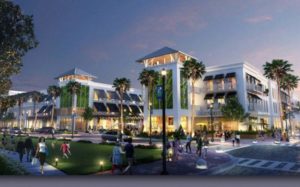
Neal Peirce
Neal Peirce died over the holidays and we shouldn’t let his passing go without a look back at his life and his influence.
Mr. Peirce was a journalist and researcher who studied cities, regions and states—not exactly a sexy beat but an important one because communities change or stagnate on the local level far from the gaze of Cable TV pundits and national media.
As a result, if you were a policymaker in the 80s, 90s and 2000s with a burning desire to make your time in office count, you were most likely aware of Mr. Peirce and influenced by his work.
As an elected official in Delray Beach from 2000-07, I read every word he wrote, subscribed to his column and poured over his reports seeking ideas, insights and wisdom.
He was a hero of mine. And he inspired many other mayors I go to know through the U.S. Conference of Mayors and Florida League of Cities.
In addition to a syndicated column, Mr. Peirce was a partner in a firm called Citistates.
Cities, states and regions would hire the firm to study their communities and make recommendations on how to solve problems or take advantage of opportunities, some of them hidden.
About 20 years ago, business, non-profit and civic leaders in South Florida engaged Citistates in a unique effort that also included major regional newspapers which agreed to publish Mr. Peirce’s “think” pieces so that stakeholders could be educated on some of the opportunities and challenges we faced.
When Mr. Peirce passed during the holidays, I went back and read a few of the old newspaper columns including a wonderful piece on U.S. 1 that included recommendations to turn the auto-oriented highway into more of a neighborhood.
Peirce envisioned U.S. 1 becoming a new “Main Street” linking South Florida from the Treasure Coast to South Dade. He recommended that the Florida Department of Transportation reclassify U.S. 1 as a “local access road”, not a thoroughfare for moving traffic as a rapidly as possible.
“High speed traffic is the job of I-95 and other such arterials,” he wrote.
And he was right.
Delray took that advice and I was a policymaker at the time the decision was made to narrow Federal Highway. It was not an easy or obvious decision and the opposition to the plan was formidable—as were the proponents who wanted to make the road safer (there was a high incidence of accidents) and more picturesque. They argued that it made no sense to have a high speed freeway bisecting a pedestrian oriented downtown. We studied the issue for a year, studying speeds, looking at accident history and traffic volume before ultimately deciding to proceed with the project.
In my mind, it turned U.S. 1 in Delray from a highway into a neighborhood and gave the area a host of economic and placemaking opportunities.
Reading Mr. Peirce’s column on U.S. 1 I have no doubt that his thinking had an effect.
Peirce and his partner Curtis Johnson published a series of articles in 2000 in local newspapers on topics ranging from sustainability and traffic to New Urbanism and the difficulties of getting things done in a sprawling region with a vast variety of governments and players to navigate.
If you want to check out the articles that ran in the Sun-Sentinel and Miami Herald here’s a link. https://www.floridacdc.org/roundtable/index.html
If you read the pieces, you are struck by their continuing relevance and also by what wasn’t done.
Twenty years have gone by and we still haven’t addressed sprawl, environmental issues and affordable housing.
With Mr. Peirce’s passing, I can’t think of another journalist covering the urban beat that measures up. Governing Magazine had the great Otis White some years back and he did two major pieces on Delray Beach but he left the magazine and now that wonderful publication is going away too.
The newspapers that partnered with key non-profits to produce the Citistates project are a shell of their former selves. As a result, we no longer have a regional or community water cooler; a place to share ideas and create momentum for positive change.
Back in 2000, New Urbanism seemed like a logical solution to traffic, sprawl and environmental degradation and a chance to return some charm to what can be a cookie cutter landscape of bland design.
But in 2020, we see the same tired arguments against New Urban style development despite growing traffic and a lack of affordable housing and walkability. I cringe when I get vapid campaign emails from candidates decrying density in one sentence and vowing to save the environment in the next breath. Folks, sprawl like development is not good for the environment. It creates traffic, uses more water and will never create the amount of housing we need to help teachers, police officers and firefighters be able to live in our communities.
All of this may sound like the work of people like Neal Peirce doesn’t matter. That’s not what I believe.
I think crusading journalists and thinkers like Neil Peirce make a difference.
In 2000, Peirce wrote passionately about highway gridlock and the dangers of sprawl. If only we had listened and acted as a region, but I would argue Delray did listen and did act and that we need to continue with smart growth and community engagement practices.
Mr. Peirce had a prescription to address sprawl: utilize planning and community engagement to design a better future. He called for “mega charrettes” to bring the community to the table.
“Consider the 1.8-million-by-2020-population projection (I think he meant additional residents moving in not total population) and debate honestly, openly where the new growth ought to go. Even if a consensus wasn’t reached — and it might not be — the true, region wide issues would be a lot clearer.
How can the emerging technologies, starting with neighborhood planning programs, be made available to ordinary citizens, businesses, people interested in new development possibilities and futures? One solution: walk-in urban design centers in West Palm Beach, Fort Lauderdale and Miami, designed to marry the worlds of professional design and grassroots activism.
Ideally, architecture or planning departments from local universities would run these centers. Information on the whole gamut of planning challenges — from single transit stops or suburban neighborhood centers to growth corridors, waterfronts and affordable housing — would be available.
Such centers are already open and operating in such varied places as Chattanooga, Birmingham, Little Rock and Portland, Ore., with very favorable reports on their performance. For democratized development in South Florida, they might represent a dramatic breakthrough.”
Alas, it didn’t happen. But it’s not too late. Or is it?








